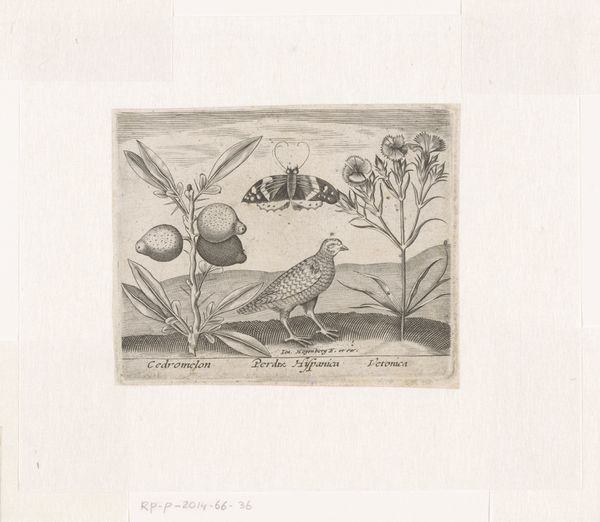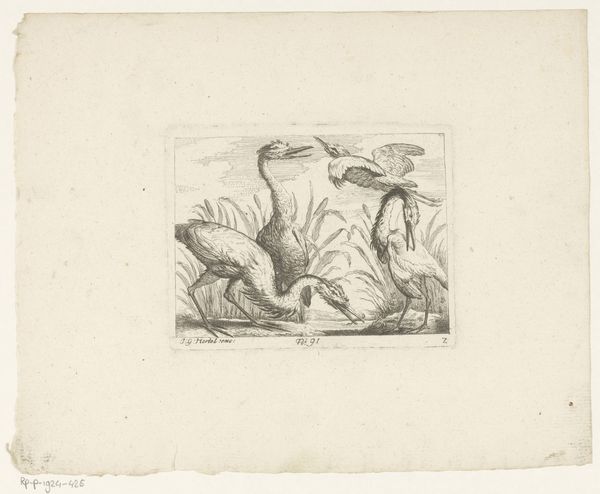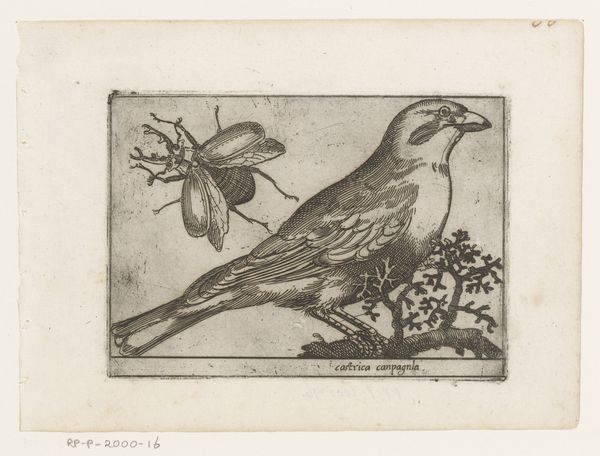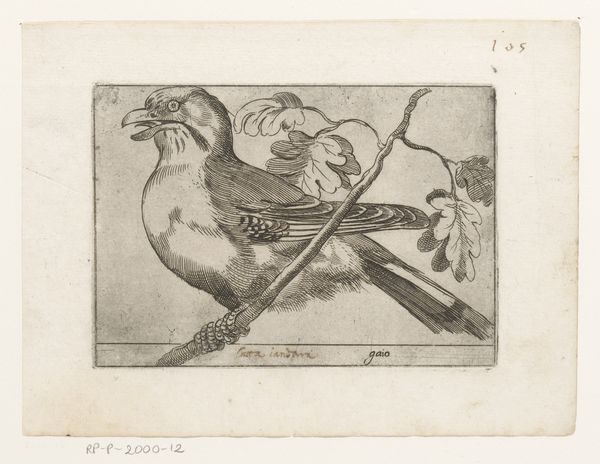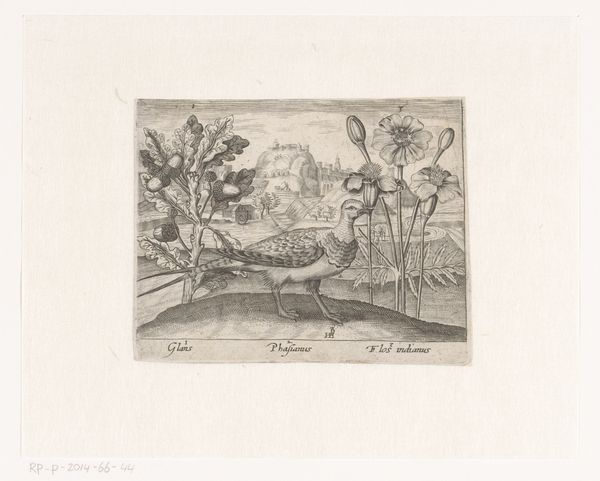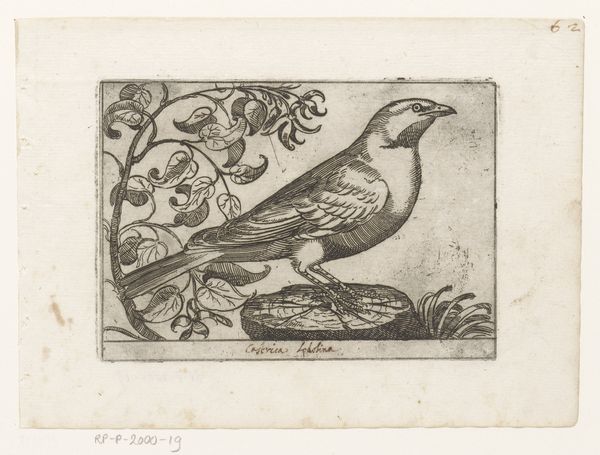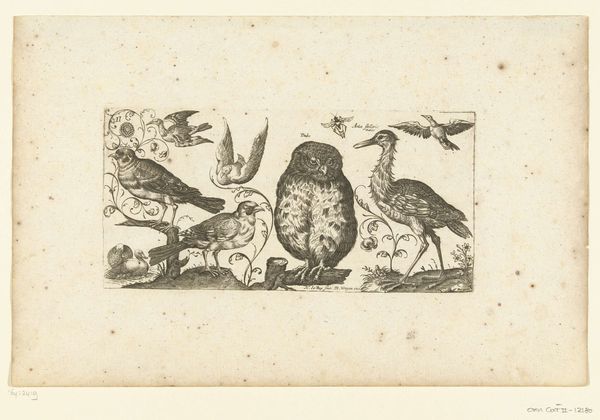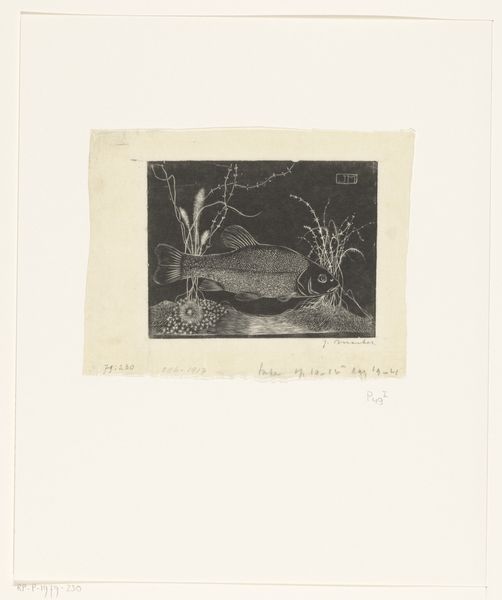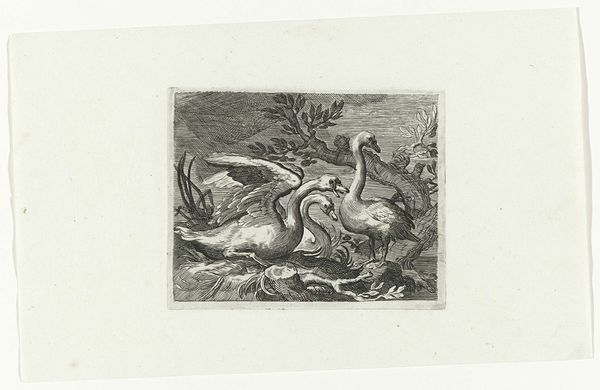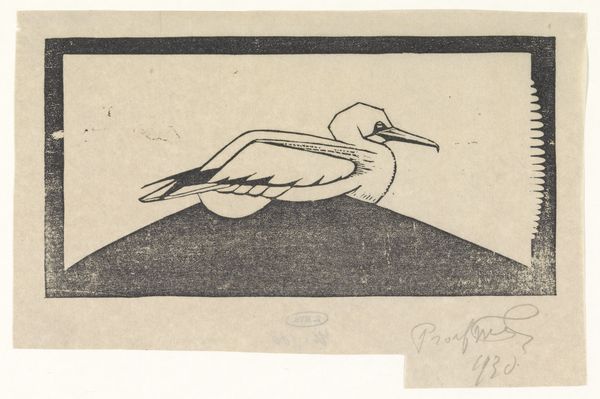
print, paper, ink, engraving
#
animal
#
ink paper printed
# print
#
old engraving style
#
landscape
#
white palette
#
flower
#
paper
#
ink
#
northern-renaissance
#
engraving
Dimensions: height 95 mm, width 120 mm
Copyright: Rijks Museum: Open Domain
Editor: So, here we have Johann Hogenberg's "Series of Prints with Flowers and Animals in a Landscape," dating from around 1600 to 1605. It's an ink engraving on paper, and I'm really struck by how it captures this incredibly detailed, almost scientific depiction of nature. It's like a tiny, contained world. What do you see in this piece? Curator: For me, it’s about stepping back in time, really. Imagine the artist, eyes narrowed, meticulously etching each tiny line. These weren't just decorative; they were often part of larger botanical or zoological studies. The engraving gives such clarity; I love the curiosity about the natural world, but it also hints at humanity’s burgeoning need to categorize and understand. It feels almost like a moment caught between magic and reason. Do you sense that tension? Editor: Definitely! It’s beautiful but also slightly…clinical? The plants and animal, though lovely, feel a bit like specimens pinned under glass. Curator: Precisely! And that’s what makes it sing to me. It’s art, yes, but also science, and history swirling together in delicate ink lines. Editor: I never thought of it that way, but now that you mention it, it is that intersection of art and early scientific study that makes it compelling! Thanks for shining light on that! Curator: My pleasure! It's always thrilling when we find ourselves on the crossroads of different ways of thinking!
Comments
rijksmuseum about 2 years ago
⋮
In making his representations of flowers and animals Hogenberg borrowed freely from prints by other artists. Some combinations are endearing, others slightly bizarre. What does a polar bear have to do with artichokes? It is precisely the series’ mixture of originality and naiveté that is so appealing to modern eyes.
Join the conversation
Join millions of artists and users on Artera today and experience the ultimate creative platform.
